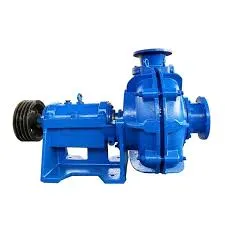English
- Afrikaans
- Albanian
- Amharic
- Arabic
- Armenian
- Azerbaijani
- Basque
- Belarusian
- Bengali
- Bosnian
- Bulgarian
- Catalan
- Cebuano
- Corsican
- Croatian
- Czech
- Danish
- Dutch
- English
- Esperanto
- Estonian
- Finnish
- French
- Frisian
- Galician
- Georgian
- German
- Greek
- Gujarati
- Haitian Creole
- hausa
- hawaiian
- Hebrew
- Hindi
- Miao
- Hungarian
- Icelandic
- igbo
- Indonesian
- irish
- Italian
- Japanese
- Javanese
- Kannada
- kazakh
- Khmer
- Rwandese
- Korean
- Kurdish
- Kyrgyz
- Lao
- Latin
- Latvian
- Lithuanian
- Luxembourgish
- Macedonian
- Malgashi
- Malay
- Malayalam
- Maltese
- Maori
- Marathi
- Mongolian
- Myanmar
- Nepali
- Norwegian
- Norwegian
- Occitan
- Pashto
- Persian
- Polish
- Portuguese
- Punjabi
- Romanian
- Russian
- Samoan
- Scottish Gaelic
- Serbian
- Sesotho
- Shona
- Sindhi
- Sinhala
- Slovak
- Slovenian
- Somali
- Spanish
- Sundanese
- Swahili
- Swedish
- Tagalog
- Tajik
- Tamil
- Tatar
- Telugu
- Thai
- Turkish
- Turkmen
- Ukrainian
- Urdu
- Uighur
- Uzbek
- Vietnamese
- Welsh
- Bantu
- Yiddish
- Yoruba
- Zulu
Telephone: +86 13120555503
Email: frank@cypump.com
Nov . 04, 2024 08:43 Back to list
double suction pump definition
Understanding Double Suction Pumps Definition and Applications
Understanding Double Suction Pumps Definition and Applications
The operational principle of a double suction pump is rooted in centrifugal force. When the impeller rotates, it creates a low-pressure area at the inlet, allowing the fluid to flow in from both sides. The fluid is then propelled outward by the impeller blades, gaining kinetic energy and subsequently directed toward the discharge outlet. This dual-sided suction increases the flow capacity and enhances the efficiency of the pump, making it suitable for various industrial applications.
double suction pump definition

Double suction pumps are particularly advantageous in applications that require high flow rates and low NPSH (Net Positive Suction Head) requirements. They are commonly used in water supply systems, irrigation, cooling water systems in power plants, and large-scale industrial processes. Their ability to operate at lower speeds while maintaining high efficiency makes them an ideal choice for heavy-duty applications, as they reduce wear and tear on mechanical parts.
Moreover, these pumps are often employed in situations where the fluid contains suspended solids or is prone to cavitation. The double suction design helps mitigate cavitation risk by ensuring a smoother flow of fluids through the pump, thereby enhancing its operational reliability. Additionally, many double suction pumps are designed with a robust construction, which is essential for handling abrasive fluids and harsh operational conditions.
In summary, the double suction pump is an invaluable component in the field of fluid dynamics. Its ability to efficiently manage large volumes of liquid with minimized mechanical strain sets it apart from other pump designs. As industries continue to seek solutions for effective fluid transport, the relevance and application of double suction pumps will undoubtedly grow, emphasizing the need for quality engineering and maintenance practices to ensure their optimal performance. Through advancements in technology, these pumps will continue to evolve, paving the way for more efficient and sustainable industrial processes.
-
ISG Series Vertical Pipeline Pump - Chi Yuan Pumps Co., LTD.|Advanced Hydraulic Design&Energy-Efficient Solutions
NewsJul.30,2025
-
ISG Series Vertical Pipeline Pump - Chi Yuan Pumps Co., LTD.
NewsJul.30,2025
-
ISG Series Vertical Pipeline Pump - Chi Yuan Pumps Co., LTD.|energy-efficient fluid handling&industrial durability
NewsJul.30,2025
-
ISG Series Vertical Pipeline Pump - Chi Yuan Pumps | Advanced Engineering&Industrial Efficiency
NewsJul.30,2025
-
ISG Series Pipeline Pump - Chi Yuan Pumps | High Efficiency, Energy Saving
NewsJul.30,2025
-
ISG Series Vertical Pipeline Pump-Chi Yuan Pumps|High Efficiency&Reliable Performance
NewsJul.29,2025










